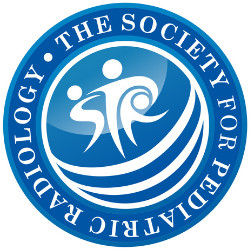
Chen Danling, Kuehne Alexander, Hwang James, Tu Long, Ehrlich Lauren, Lisse Sean
Final Pr. ID: Poster #: CR-048
Grisel syndrome is a rare, acquired, non-traumatic rotatory subluxation of the atlantoaxial joint that typically occurs in the childhood period. It arises from cervical ligamentous laxity and instability following an infectious or inflammatory process in the head and neck, such as from an upper respiratory tract infection or from otolaryngolic surgery. The proposed pathophysiology of the disorder is infective septic emboli spreading from the posterosuperior pharynx to the upper cervical region via the pharyngovertebral vein, which connects the posterior nasopharyngeal veins with the periodontoid plexus. Patients present with neck pain, stiffness, and torticollis. Four types of atlantoaxial subluxation have been described using the Fielding classification system: type 1: rotation of the atlas on the axis without anterior displacement; type 2: atlantoaxial subluxation with 3-5 mm anterior displacement; type 3: atlantoaxial subluxation with greater than 5 mm anterior displacement; and type 4: atlantoaxial subluxation with posterior displacement. Permanent deformation and severe neurologic sequelae may result in the absence of timely intervention.
A 11-year-old male patient presented to the hospital with a two-week-history of severe postoperative neck pain, stiffness, headache, jaw pain, trismus, and anorexia after undergoing elective outpatient adenotonsillectomy. Contrast-enhanced CT imaging of the neck demonstrated a 4.0 cm rim-enhancing collection in the right C1-C2 prevertebral space extending into the right atlantoccipitalatlantooccipital and atlantoaxial joints consistent with prevertebral abscess formation. Additional imaging findings included atlantoaxial rotation and anterior subluxation of C1 on C2 up to 9 mm. MR of the cervical spine demonstrated evidence of prevertebral space infection, osteomyelitis of C1 and the C2 odontoid process, and rotatory and anterior atlantoaxial subluxation. Findings met criteria for Fielding type III rotatory atlantoaxial dislocation and Grisel’s syndrome. While the patient initially received conservative treatment with an extended intravenous antibiotics course of intravenous antibiotics and application of a hard collar, follow-up imaging demonstrated worsening infection, increased atlantoaxial subluxation, and central canal stenosis at C1-C2. He consequently underwent neurosurgical decompression and occipital-cervical fusion with full recovery of neurologic function.
Read More
Authors: Chen Danling , Kuehne Alexander , Hwang James , Tu Long , Ehrlich Lauren , Lisse Sean
Keywords: Infection, Cervical Spine, Atlantodental
Intwala Devanshi, Colglazier Roy, Kang Paul, Gridley Dan, Connell Mary
Final Pr. ID: Poster #: SCI-003
Understanding normal parameters of pediatric cervical spine is imperative for early detection of cervical spine injury by computed tomography (CT) post trauma. Young children have a higher biomechanical fulcrum, incomplete ossification, and increased soft tissue laxity which minimizes anatomical distortion on CT [1,2]. The first part of this two part study aims to establish normal cervical joint spaces measurements in non-traumatic pediatric population with particular attention to the lateral atlantodental interval (ADI). Read More
Authors: Intwala Devanshi , Colglazier Roy , Kang Paul , Gridley Dan , Connell Mary
Keywords: Cervical spine, Atlantodental, Normal parameters
